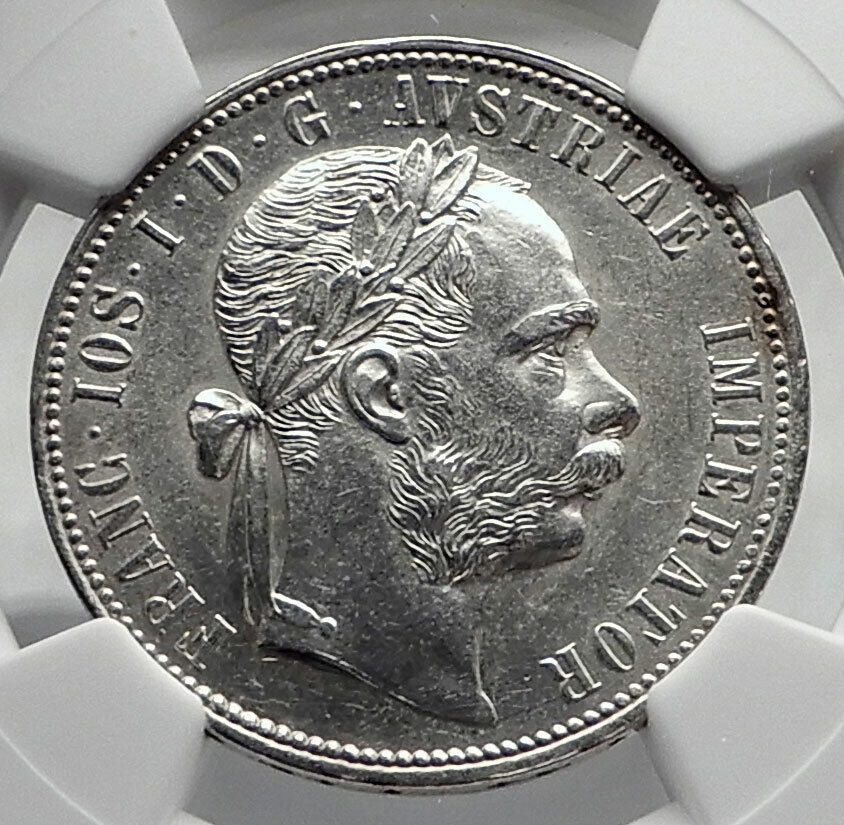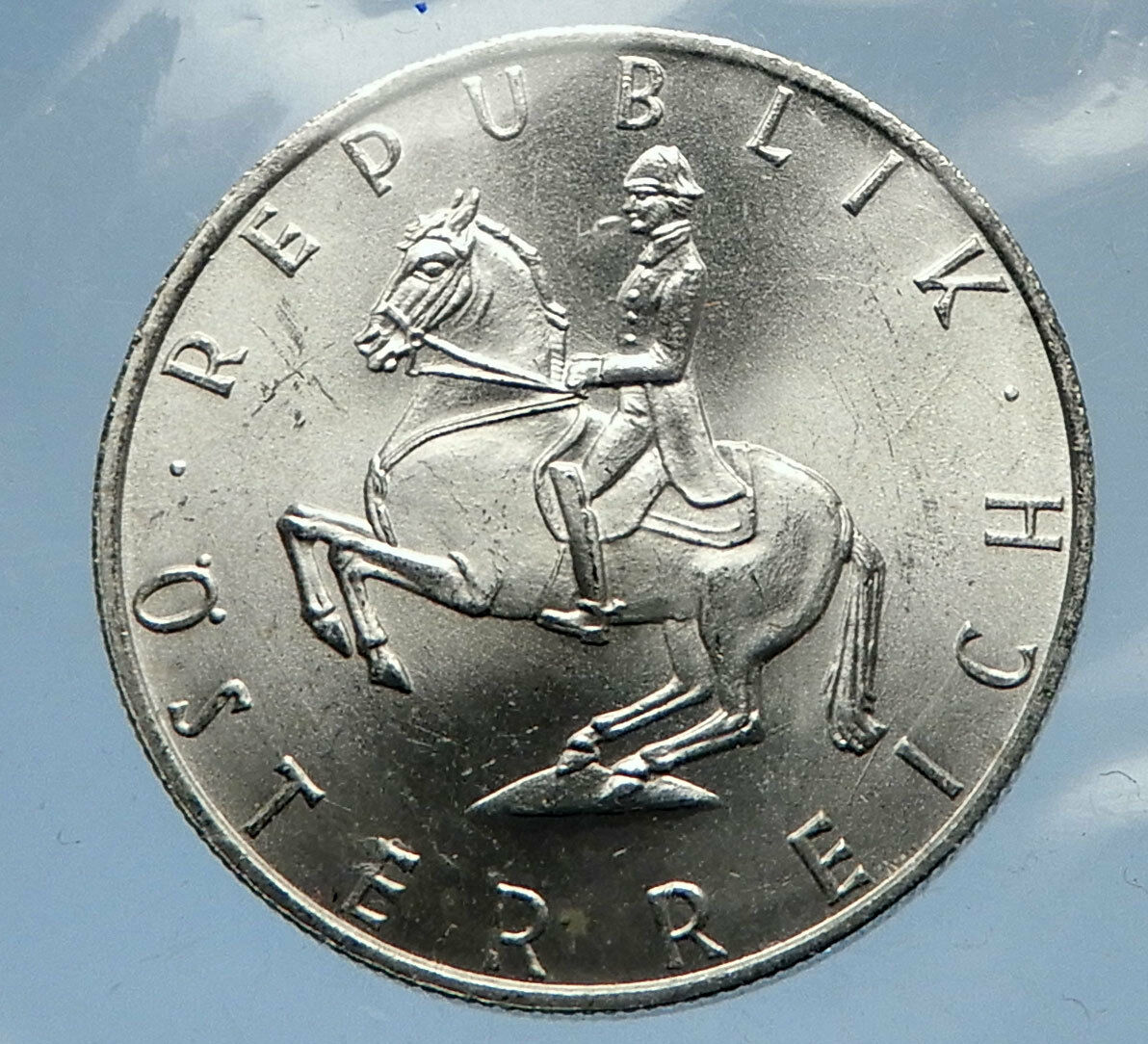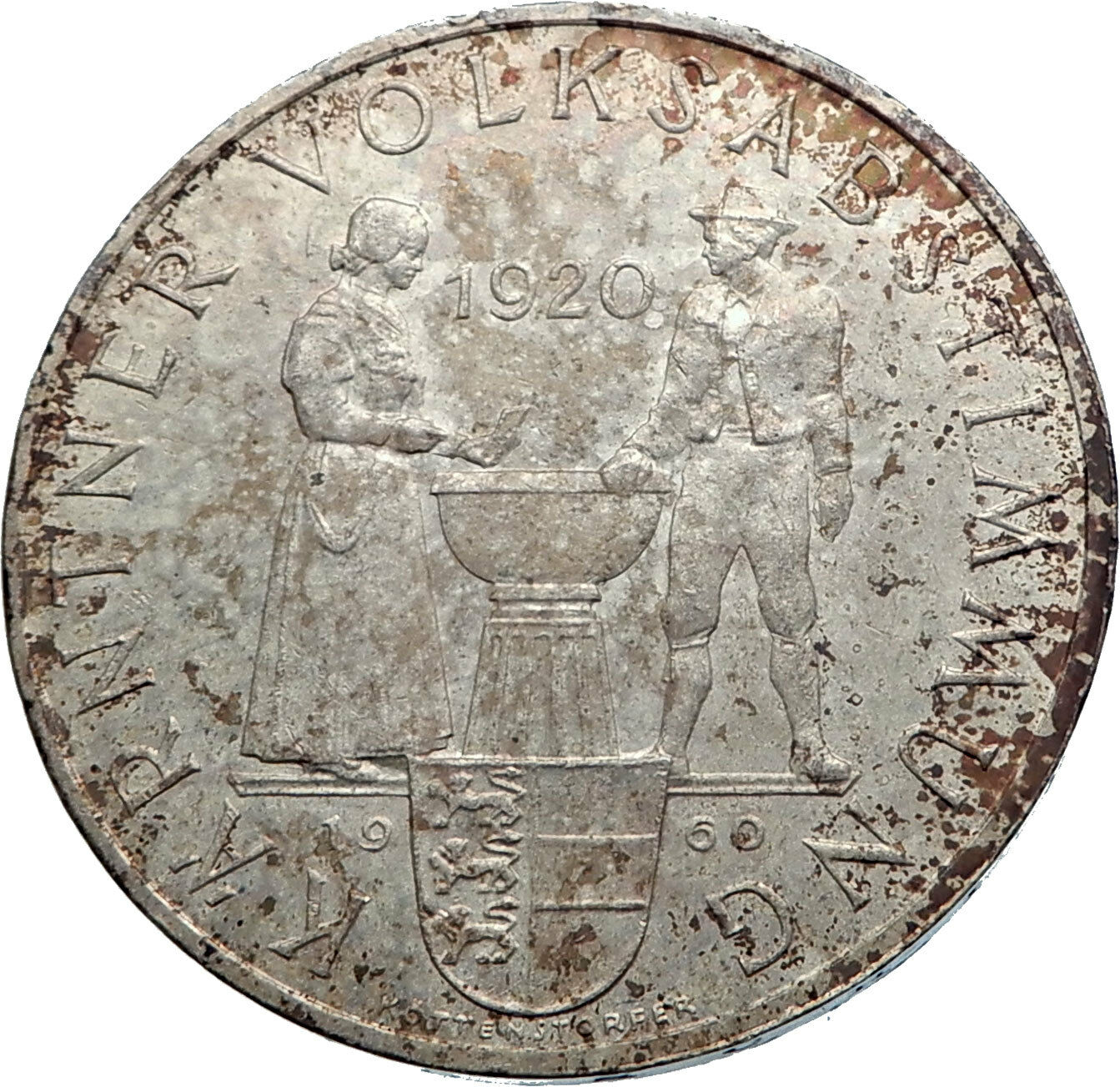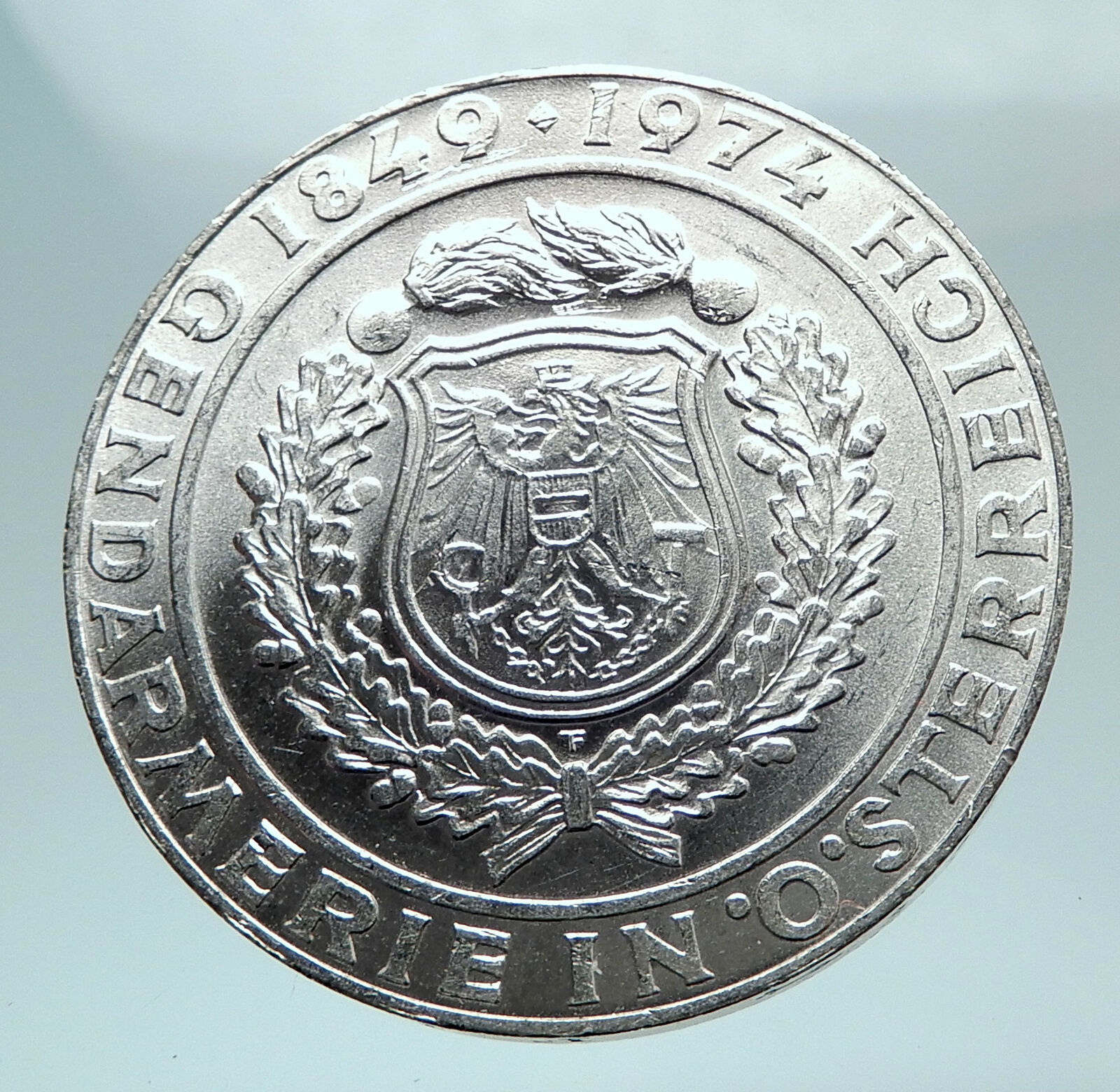|
Austria – 600th Anniversary of the Vienna University
1965 Proof 50 Schilling Silver 34mm (20.01 grams) 0.900 Silver (0.5787 oz. ASW)
Reference: KM# 2898
· REPUBLIK · 50 SCHILLING ÖSTERREICH, Circle of shields.
1365 UNIVERSITÄT.WIEN 1965 RUDOLF DER STIFTER, Crowned head, facing 3/4 right.
Edge Lettering: ~*~ FÜNFZIG SCHILLING
You are bidding on the exact item pictured, provided with a Certificate of Authenticity and Lifetime Guarantee of Authenticity.
 The University of Vienna (German: Universität Wien) is a public university located in Vienna, Austria. It was founded by Duke Rudolph IV in 1365 and is the oldest university in the German-speaking world. With its long and rich history, the University of Vienna has developed into one of the largest universities in Europe, and also one of the most renowned, especially in the Humanities. It is associated with 20 Nobel prize winners and has been the academic home to a large number of scholars of historical as well as of academic importance. The University of Vienna (German: Universität Wien) is a public university located in Vienna, Austria. It was founded by Duke Rudolph IV in 1365 and is the oldest university in the German-speaking world. With its long and rich history, the University of Vienna has developed into one of the largest universities in Europe, and also one of the most renowned, especially in the Humanities. It is associated with 20 Nobel prize winners and has been the academic home to a large number of scholars of historical as well as of academic importance.
From the Middle Ages to the Enlightenment
The University was founded on 12 March 1365 by Rudolf IV, Duke of Austria, and his two brothers, Dukes Albert III and Leopold III, hence the additional name “Alma Mater Rudolphina”. After the Charles University in Prague and Jagiellonian University in Kraków, the University of Vienna is the third oldest university in Central Europe and the oldest university in the contemporary German-speaking world; it remains a question of definition as the Charles University in Prague was German-speaking when founded, too.
The University of Vienna was modelled after the University of Paris. However, Pope Urban V did not ratify the deed of foundation that had been sanctioned by Rudolf IV, specifically in relation to the department of theology. This was presumably due to pressure exerted by id competition for the Charles University in Prague. Approval was finally received from the Pope in 1384 and the University of Vienna was granted the status of a full university, including the Faculty of Catholic Theology. The first university building opened in 1385. It grew into the biggest university of the Holy Roman Empire, and during the advent of Humanism in the mid-15th century was home to more than 6,000 students.
.JPG/220px-Wien_-_Universität_(2).JPG) In its early years, the university had a partly hierarchical, partly cooperative structure, in which the Rector was at the top, while the students had little say and were settled at the bottom. The Magister and Doctors constituted the four faculties and elected the academic officials from amidst their ranks. The students, but also all other Supposita (university members), were divided into four Academic Nations. Their elected board members, mostly graduates themselves, had the right to elect the Rector. He presided over the Consistory which included procurators of each of the nations and the faculty deans, as well as over the University Assembly, in which all university teachers participated. Complaints or appeals against decisions of faculty by the students had to be brought forward by a Magister or Doctor. In its early years, the university had a partly hierarchical, partly cooperative structure, in which the Rector was at the top, while the students had little say and were settled at the bottom. The Magister and Doctors constituted the four faculties and elected the academic officials from amidst their ranks. The students, but also all other Supposita (university members), were divided into four Academic Nations. Their elected board members, mostly graduates themselves, had the right to elect the Rector. He presided over the Consistory which included procurators of each of the nations and the faculty deans, as well as over the University Assembly, in which all university teachers participated. Complaints or appeals against decisions of faculty by the students had to be brought forward by a Magister or Doctor.
Being considered a Papal Institution, the university suffered quite a setback during the Reformation. In addition, the first Siege of Vienna by Ottoman forces had devastating effects on the city, leading to a sharp decline, with only 30 students enrolled at the lowest point. For King Ferdinand I, this meant that the university should be tied to the church to an even stronger degree, and in 1551 he installed the Jesuit Order there. With the enacting of the Sanctio Pragmatica edict by emperor Ferdinand II in 1623, the Jesuits took over teaching at the theological and philosophical faculty, and thus the university became a stronghold of Catholicism for over 150 years. It was only in the Mid-18th century that Empress Maria Theresa forced the university back under control of the monarchy. Her successor Joseph II helped in the further reform of the university, allowing both Protestants and Jews to enroll as well as introducing German as the compulsory language of instruction.
From the 19th century onwards
Big changes were instituted in the wake of the Revolution in 1848, with the Philosophical Faculty being upgraded into equal status as Theology, Law and Medicine. Led by the reforms of Leopold, Count von Thun und Hohenstein, the university was able to achieve a larger degree of academic freedom. The current main building on the Ringstraße was built between 1877 and 1884 by Heinrich von Ferstel. The previous main building was located close to the Stuben Gate (Stubentor) on Iganz Seipel Square, current home of the old University Church (Universitätskirche) and the Austrian Academy of Sciences (Österreichische Akademie der Wissenschaften). Women were admitted as full students from 1897, although their studies were limited to Philosophy. The remaining departments gradually followed suit, although with considerable delay: Medicine in 1900, Law in 1919, Protestant Theology in 1923 and finally Roman Catholic Theology in 1946. Ten years after the admission of the first female students, Elise Richter became the first woman to receive habilitation, becoming professor of Romance Languages in 1907; she was also the first female distinguished professor.
In the late 1920s, the university was in steady turmoil because of anti-democratic and anti-Semitic activity by parts of the student body. Professor Moritz Schlick was killed by a former student while ascending the steps of the University for a class. His murderer was later released by the Nazi Regime. Following the Anschluss, the annexation of Austria into Greater Germany by the Nazi regime, in 1938 the University of Vienna was reformed under political aspects and a huge number of teachers and students were dismissed for political and “racial” reasons.[3] In April 1945, the then 22-year-old Kurt Schubert, later acknowledged doyen of Judaic Studies at the University of Vienna, was permitted by the Soviet occupation forces to open the university again for teaching, which is why he is regarded as the unofficial first rector in the post-war period. On 25 April 1945, however, the constitutional lawyer Ludwig Adamovich senior was elected as official rector of the University of Vienna. A large degree of participation by students and university staff was realized in 1975, however the University Reforms of 1993 and 2002 largely re-established the professors as the main decision makers. However, also as part of the last reform, the university after more than 250 years being largely under governmental control, finally regained its full legal capacity. The number of faculties and centers was increased to 18, and the whole of the medical faculty separated into the new Medical University of Vienna.
![Location of Austria (dark green)– in Europe (green & dark grey)– in the European Union (green) – [Legend]](https://upload.wikimedia.org/wikipedia/commons/thumb/9/9d/EU-Austria.svg/250px-EU-Austria.svg.png)  Austria, officially the Republic of Austria (German: Republik Österreich), is a federal republic and a landlocked country of over 8.5 million people in Central Europe. It is bordered by the Czech Republic and Germany to the north, Hungary and Slovakia to the east, Slovenia and Italy to the south, and Switzerland and Liechtenstein to the west. The territory of Austria covers 83,879 square kilometres (32,386 sq mi). Austria’s terrain is highly mountainous, lying within the Alps; only 32% of the country is below 500 metres (1,640 ft), and its highest point is 3,798 metres (12,461 ft). The majority of the population speak local Bavarian dialects of German as their native language, and Austrian German in its standard form is the country’s official language. Other local official languages are Hungarian, Burgenland Croatian, and Slovene. Austria, officially the Republic of Austria (German: Republik Österreich), is a federal republic and a landlocked country of over 8.5 million people in Central Europe. It is bordered by the Czech Republic and Germany to the north, Hungary and Slovakia to the east, Slovenia and Italy to the south, and Switzerland and Liechtenstein to the west. The territory of Austria covers 83,879 square kilometres (32,386 sq mi). Austria’s terrain is highly mountainous, lying within the Alps; only 32% of the country is below 500 metres (1,640 ft), and its highest point is 3,798 metres (12,461 ft). The majority of the population speak local Bavarian dialects of German as their native language, and Austrian German in its standard form is the country’s official language. Other local official languages are Hungarian, Burgenland Croatian, and Slovene.
The origins of modern-day Austria date back to the time of the Habsburg dynasty when the vast majority of the country was a part of the Holy Roman Empire. From the time of the Reformation, many Northern German princes, resenting the authority of the Emperor, used Protestantism as a flag of rebellion. The Thirty Years War, the influence of the Kingdom of Sweden and Kingdom of France, the rise of the Kingdom of Prussia, and the Napoleonic invasions all weakened the power of the Emperor in the North of Germany, but in the South, and in non-German areas of the Empire, the Emperor and Catholicism maintained control. During the 17th and 18th centuries, Austria was able to retain its position as one of the great powers of Europe and, in response to the coronation of Napoleon as the Emperor of the French, the Austrian Empire was officially proclaimed in 1804. Following Napoleon’s defeat, Prussia emerged as Austria’s chief competitor for rule of a larger Germany. Austria’s defeat by Prussia at the Battle of Königgrätz, during the Austro-Prussian War of 1866 cleared the way for Prussia to assert control over the rest of Germany. In 1867, the empire was reformed into Austria-Hungary. After the defeat of France in the 1870 Franco-Prussian War, Austria was left out of the formation of a new German Empire, although in the following decades its politics, and its foreign policy, increasingly converged with those of the Prussian-led Empire. During the 1914 July Crisis that followed the assassination of Archduke Franz Ferdinand of Austria, Germany guided Austria in issuing the ultimatum to Serbia that led to the declaration of World War I.
After the collapse of the Habsburg (Austro-Hungarian) Empire in 1918 at the end of World War I, Austria adopted and used the name the Republic of German-Austria (Deutschösterreich, later Österreich) in an attempt for union with Germany, but was forbidden due to the Treaty of Saint-Germain-en-Laye (1919). The First Austrian Republic was established in 1919. In the 1938 Anschluss, Austria was occupied and annexed by Nazi Germany.[14] This lasted until the end of World War II in 1945, after which Germany was occupied by the Allies and Austria’s former democratic constitution was restored. In 1955, the Austrian State Treaty re-established Austria as a sovereign state, ending the occupation. In the same year, the Austrian Parliament created the Declaration of Neutrality which declared that the Second Austrian Republic would become permanently neutral.
Today, Austria is a parliamentary representative democracy comprising nine federal states. The capital and largest city, with a population exceeding 1.7 million, is Vienna. Austria is one of the richest countries in the world, with a nominal per capita GDP of $52,216 (2014 est.). The country has developed a high standard of living and in 2014 was ranked 21st in the world for its Human Development Index. Austria has been a member of the United Nations since 1955, joined the European Union in 1995, and is a founder of the OECD. Austria also signed the Schengen Agreement in 1995, and adopted the euro in 1999.
|





 The University of Vienna (German: Universität Wien) is a public university located in Vienna, Austria. It was founded by Duke Rudolph IV in 1365 and is the oldest university in the German-speaking world. With its long and rich history, the University of Vienna has developed into one of the largest universities in Europe, and also one of the most renowned, especially in the Humanities. It is associated with 20 Nobel prize winners and has been the academic home to a large number of scholars of historical as well as of academic importance.
The University of Vienna (German: Universität Wien) is a public university located in Vienna, Austria. It was founded by Duke Rudolph IV in 1365 and is the oldest university in the German-speaking world. With its long and rich history, the University of Vienna has developed into one of the largest universities in Europe, and also one of the most renowned, especially in the Humanities. It is associated with 20 Nobel prize winners and has been the academic home to a large number of scholars of historical as well as of academic importance. .JPG/220px-Wien_-_Universität_(2).JPG) In its early years, the university had a partly hierarchical, partly cooperative structure, in which the Rector was at the top, while the students had little say and were settled at the bottom. The Magister and Doctors constituted the four faculties and elected the academic officials from amidst their ranks. The students, but also all other Supposita (university members), were divided into four Academic Nations. Their elected board members, mostly graduates themselves, had the right to elect the Rector. He presided over the Consistory which included procurators of each of the nations and the faculty deans, as well as over the University Assembly, in which all university teachers participated. Complaints or appeals against decisions of faculty by the students had to be brought forward by a Magister or Doctor.
In its early years, the university had a partly hierarchical, partly cooperative structure, in which the Rector was at the top, while the students had little say and were settled at the bottom. The Magister and Doctors constituted the four faculties and elected the academic officials from amidst their ranks. The students, but also all other Supposita (university members), were divided into four Academic Nations. Their elected board members, mostly graduates themselves, had the right to elect the Rector. He presided over the Consistory which included procurators of each of the nations and the faculty deans, as well as over the University Assembly, in which all university teachers participated. Complaints or appeals against decisions of faculty by the students had to be brought forward by a Magister or Doctor. ![Location of Austria (dark green)– in Europe (green & dark grey)– in the European Union (green) – [Legend]](https://upload.wikimedia.org/wikipedia/commons/thumb/9/9d/EU-Austria.svg/250px-EU-Austria.svg.png)
 Austria, officially the Republic of Austria (German:
Austria, officially the Republic of Austria (German: 





